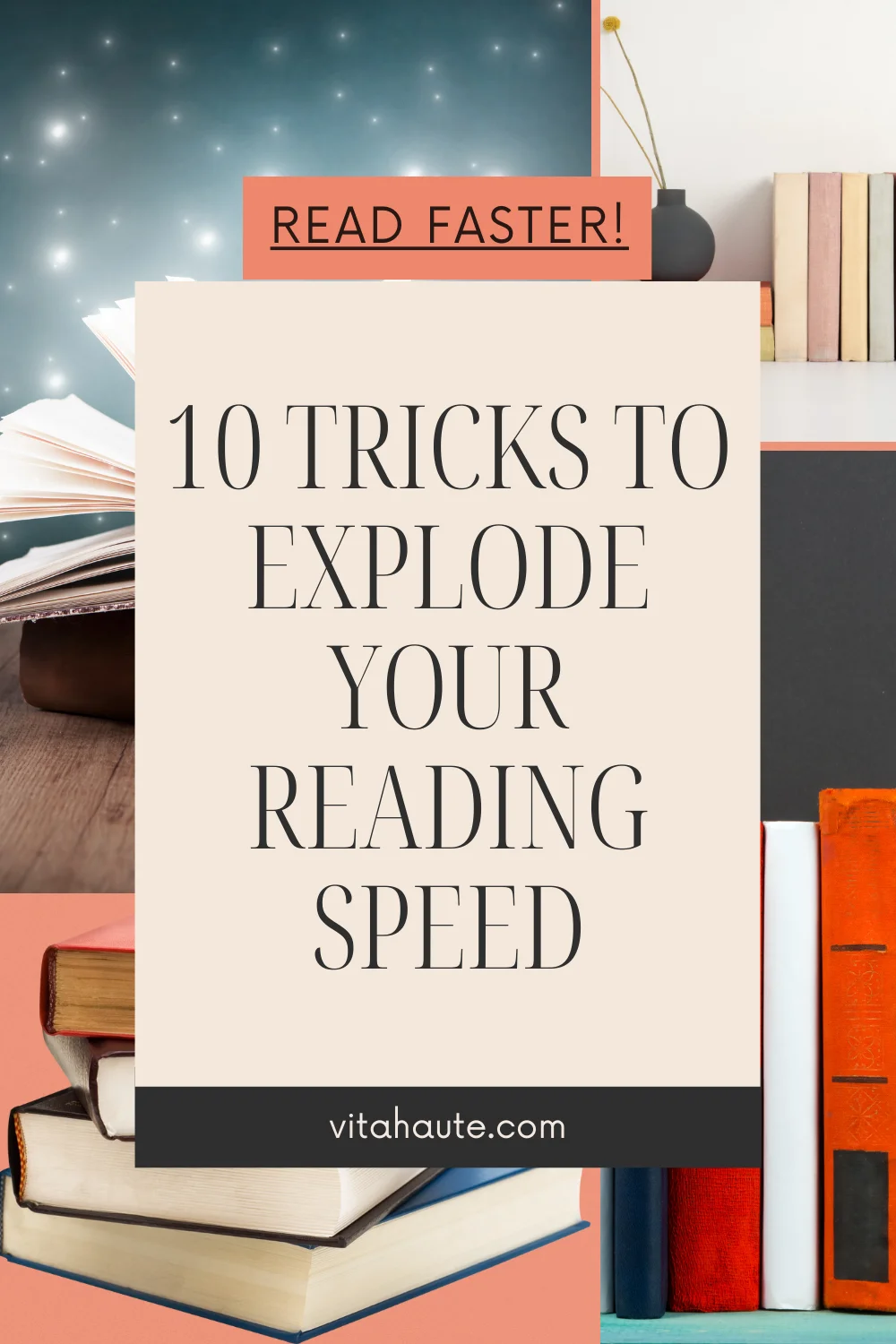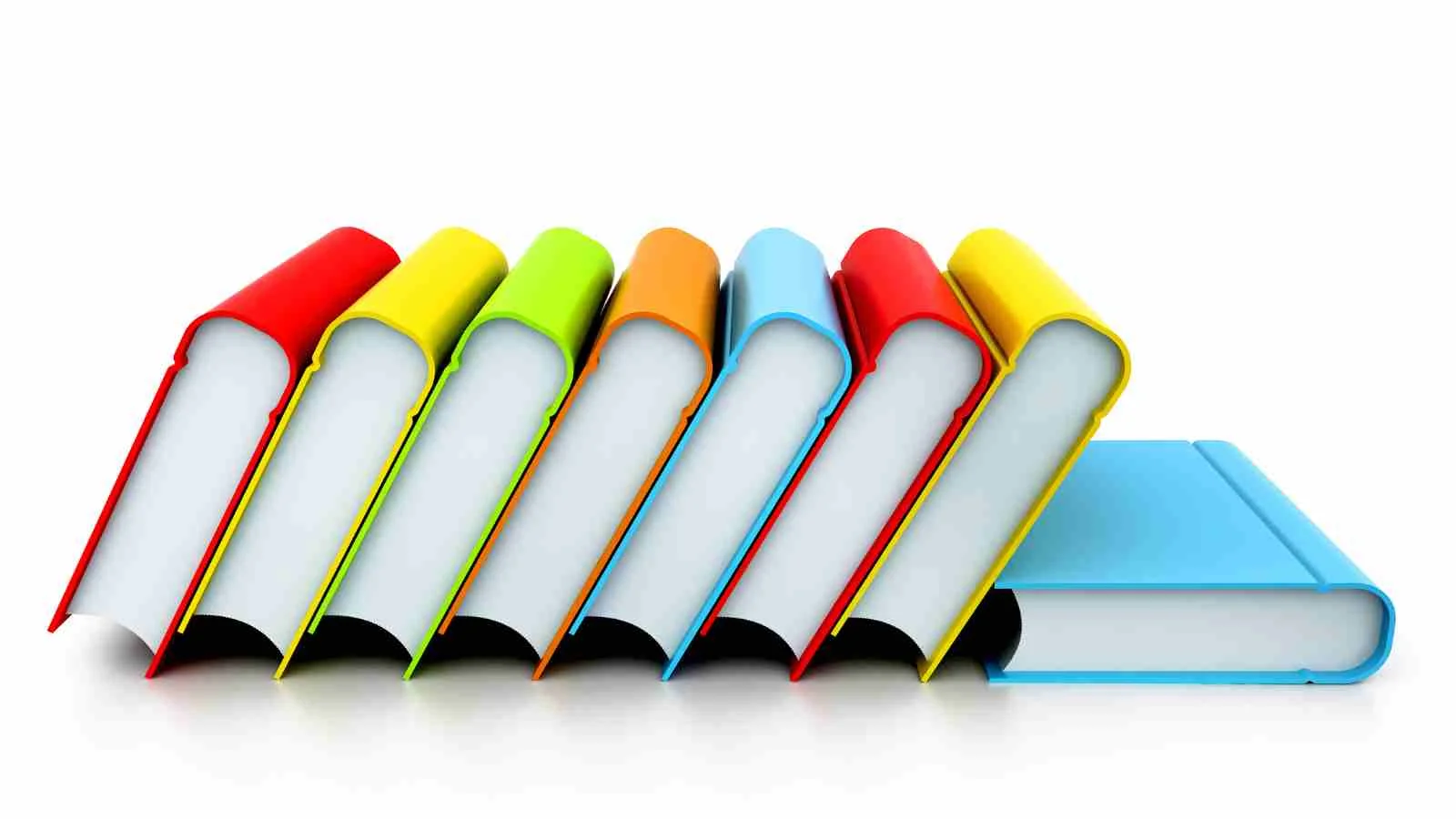Are you a book lover looking to devour more novels in less time or a student aiming to breeze through textbooks? Perhaps you’re a professional seeking to stay ahead in a world inundated with information. Whatever your reading ambitions are, we’ve got you covered with ten speed-reading tricks. But first, what is speed reading, and can it significantly it enhance your reading experience and overall productivity?

How Fast Is Considered Speed Reading?
Speed reading is reading and comprehending the text faster by taking chunks of texts instead of individual words and employing other techniques.
The average reading rate is 200-300 wpm, but you can increase your rate up to 1500 wpm or even more by employing speed reading techniques. Isn’t it incredible? Along with math shortcuts, speed reading is a skill that will enhance your life in many ways.
Can Speed Reading Be Learned?
Yes, speed reading is a skill that can be learned and developed over time with the application of specific techniques and regular practice. Employing strategies such as reading in chunks, using pointers, avoiding sub-vocalization, and implementing methods like skimming and scanning, can significantly enhance your reading speed and comprehension. Consistent practice, optimization of the reading environment, and taking breaks are key components in the process of acquiring and mastering the skill of speed reading.
For the serious reader planning to read a substantial number of books this year, students navigating intricate research, or office workers handling a taskload inundated with files, mastering the art of speed reading can significantly elevate one’s reading experience and overall productivity. Now, let’s explore the practical strategies that will empower you to read faster and comprehend more effectively.
This post contains affiliate links. Please read our disclosure.
1. Read in Chunks

You have a 1.5-inch eye span, which means you can read up to nine words at a time! Using the word-chunking strategy, you can read quicker. To read a section of the text at a time, move your eyes through the text. Reading every word of a text slows down your reading speed. Concentrate on the first and last words of the text, or a few words at a time, which will provide you with the meaning by reading only around half of the words. Your comprehension rate and speed reading ability will improve dramatically once you start taking chunks of words.
- Concentrate on reading three words at one glance.
- Combine the words and read them at a glance as if they were a road sign.
Pro Tip: Looking at every fifth or sixth word allows you to take in more information at once and reduces sub-vocalization.
2. Use a Pointer | Meta-Guiding

Meta-guiding is a speed reading technique that guides your eyes through the text by quickly moving a pointer. You can use your finger or a pen as a pointer. You have to race the pointer speedily underneath the lines and trace the pointer with your eyes. Evelyn Nielsen Wood, a Utah school teacher who pioneered this technique, claimed that meta-guiding or hand-pacing might increase your reading rate to 2,700 wpm.
At first, you may have a low comprehension rate, and your eyes may struggle to follow the pointer, but you will improve gradually.
3. Stay Away From Sub-Vocalization | One of the Best Speed Reading Techniques

Subvocalization reduces our reading speed to that of a conversation, which is usually approximately 300 words per minute—that’s moving at a snail’s pace! While reading, sub-vocalization is speaking the words in your head. It’s a typical characteristic among readers who pronounce the words aloud or move their lips while reading.
You can nearly quadruple your reading speed by turning off that inner monologue. If you want to enhance your reading speed, try to avoid sub-vocalization while reading. It may not be easy, but it can be accomplished over time. Words are processed significantly more quickly by your eyes and brain.
You can use your fingertip to follow the words. Increase your reading speed by focusing on seeing rather than hearing the words.
Pro Tip: When reading, press the tip of your tongue on the roof of your mouth to speed up the process. This minor alteration can serve as a gentle reminder that you shouldn’t sound out each word.
4. Stay Away From Regression and Back-Skipping

Regression or back-skipping in reading can become your enemy for speed reading!
Regression or back-skipping means jumping back to the previously read sentences or paragraphs and rereading. Sometimes, when you read the text passively or too fast and cannot understand the material, you tend to reread the text. Or sometimes, back-skipping also means that your eyes keep falling on the already read text.
Regression or back-skipping wastes your time and makes you a slower reader.
But how do you avoid regression and speed up reading? Well, here are the two most effective ways for that:
1. Ask Questions: You back-skip mostly because of passivity and lack of attention. You can avoid regression by asking questions and finding their answers while reading. Asking questions like “what is the main idea presented in the text?”, “how is the subsequent paragraph related to the previous one?” can help you concentrate and avoid regression.
2. Cover With Gliding: Another solution is gliding, in which you cover the text with an envelope or a card as soon as you read it. You do this to move to the following passage with complete focus. And as to know there is no way back, you are more likely to read the text attentively, thus avoiding regression.
Pro Tip: You can regress for the detailed information to read and comprehend effectively, but still, it is better to read heedfully in the first go.
5. Skim the Text

Skimming is one of the most typical and most effective speed reading techniques. Skimming helps you to literally “skim” the text quickly, get the quintessential information, and prevent wasting time on the extra details.
This technique is used both for pre-reading and actual reading. And in either case, it is a power-packed time-saving technique!
You can skim the text by:
- Quickly reading the headings, subheadings, & titles
- Reading the particular font text, e.g., italicized, bold, underlined
- Looking at the diagrams, charts, maps, etc.
- Highlighting unfamiliar terms or ideas
- Reading the topic and concluding sentences (i.e., first and last sentences, respectively)
- Reading prefaces and epilogues
Pro Tip: Use skimming as a reading strategy for complicated text and speed reading for more accessible texts.
6. Scan the Text

Sometimes, you need to quickly find a specific idea, phrase, sentence, or word in a lengthy text, and you don’t want to waste your time reading the whole text. That’s when you do scanning. You literally scan the text to get the specific piece from it.
For scanning, you need to:
- Identify the keyword or idea you want to find
- Attentively keep the idea or word in mind
- Quickly scurry your eyes over the text by avoiding all the irrelevant text
Scanning can save your time instead of giving the hectic task of reading the whole text.
Pro Tip: Scan for both academic and professional texts to find the piece of text you need.
7. Use the SQ3R Method

The SQ3R method is another technique for speedy as well as effective reading.
SQ3R method, pioneered by renowned educational psychology Francis P. Robinson in 1946, is a combination of five processes:
- Survey: It is a pre-reading technique in which you need to quickly skim the text to get its fundamental ideas and know the organization.
- Question: As mentioned in the fourth point, questions help keep the attention and thus help you speedily and efficiently. Hence, make questions out of headings or read the end chapter quizzes. The quiz techniques.
- Read: Read actively, keeping the questions in mind, and focus on the essential information.
- Recall: Summarize the key points and main ideas, enhancing retention.
- Review: Go over the material to reinforce your understanding and memory.”
This method is a comprehensive approach that can significantly improve your reading efficiency and comprehension.
8. Optimize Your Environment

Create an optimal reading environment by minimizing distractions. Choose a quiet and organized space to enhance your concentration and speed reading ability.
Pro Tip: Consider using tools like noise-canceling headphones or soothing background music to further optimize your reading environment.
9. Practice Regularly

Speed reading is a skill that improves with practice. Set aside dedicated time each day for speed reading practice to see consistent progress.
Pro Tip: Start with shorter texts and gradually move on to longer and more complex materials as you build your speed reading skills.
10. Take Breaks

Avoid fatigue and maintain focus by incorporating short breaks during your reading sessions. This helps prevent mental exhaustion and enhances overall reading efficiency.
Pro Tip: During breaks, practice relaxation techniques like stretching or deep breathing to refresh your mind.
Now that you have the complete set of speed-reading tricks, apply them consistently to achieve your reading goals and boost your productivity. Happy reading!
